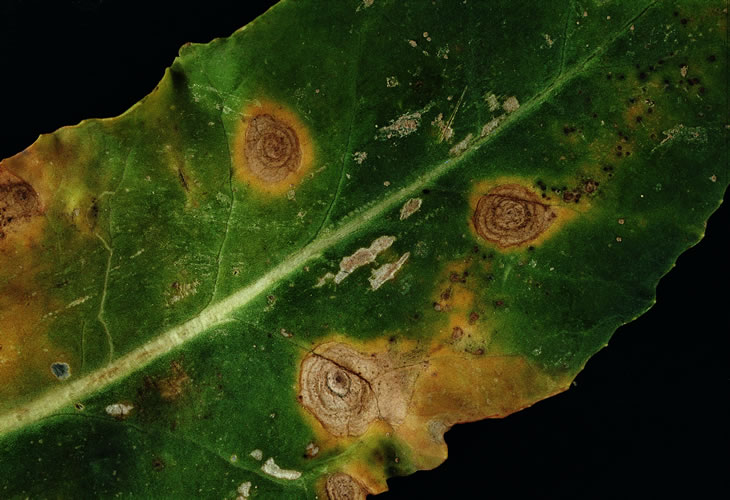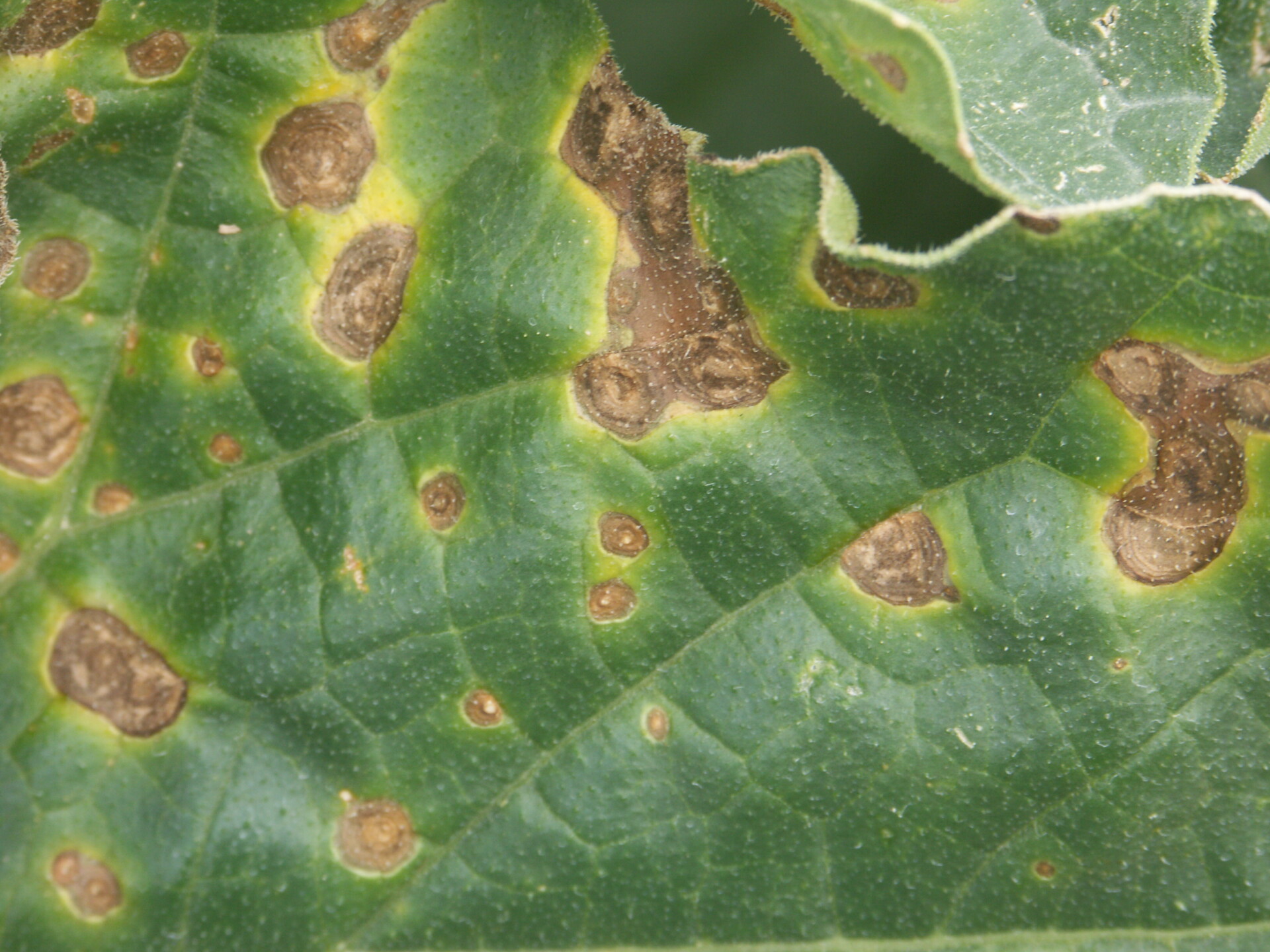
Alternariosis
Alternaria Sp.
Pathogen:
Fungus
Type:
Risk:
INTERMEDIATE
Alternariosis




WHO CAUSES IT?
Alternaria sp. is a genus of fungi that includes several phytopathogenic species that affect a wide range of plants, including chard. These fungi are saprophytic and necrotrophic, capable of surviving on plant remains in the soil or on infected seeds during unfavorable periods. Alternaria produces conidia in long chains that are easily dispersed by wind, water, and physical contact. These conidia germinate in conditions of high humidity, penetrating the plant tissue through wounds or directly through the stomata. Once inside the plant, the fungus produces toxins that kill cells and feed on dead material, forming characteristic necrotic Taches. Alternaria development is favored by warm, humid environments, allowing for multiple cycles of infection during a growing season.
SYMPTOMS
In chard, Alternaria sp. It causes a disease known as alternariosis, which mainly affects the leaves, reducing photosynthesis and product quality. The infection begins with small dark Taches on the leaves that quickly enlarge and may merge, forming large necrotic areas. The lesions usually have a yellow border and, in high humidity conditions, may have a hairy appearance due to sporulation of the fungus.
• Small dark Taches on the leaves.
• Taches that enlarge and merge forming large necrotic areas.
• Lesions with yellow border.
• Hairy appearance in high humidity conditions.
• Reduction in photosynthesis.
• Loss of product quality.
TEMPERATURE AND HUMIDITY
20ºC - 30ºC
80% - 100%
TRANSMISSION PATHS
Wind, water, direct contact, gardening tools, infected seeds.
Do you want to remove this pest? Choose how you want to treat it.
TREATMENTS
Chemical treatment
• AZOXISTROBIN 25% [SC] P/V
• FLUDIOXONIL 50% [WG] P/P
• FLUXAPYROXAD 7.5% + DIFENOCONAZOLE 5% [SC] P/V
• COPPER OXYCHLORIDE 35% (exp. in Cu) [WG] P/P
• COPPER OXYCHLORIDE 50% (EXPR. IN CU) [WP] P/P
• COPPER OXYCHLORIDE 52% (EXPR. IN CU) [SC] P/V
• COPPER OXYCHLORIDE 70% (EXPR. IN CU) [SC] P/V
• PIRACLOSTROBIN 6.7% + BOSCALIDE 26.7% (I) [WG] P/P
• CUPROCALCIC SULFATE 20% (EXPR. IN CU) [WP] P/P
Authorized treatments in organic farming
• COPPER OXYCHLORIDE 35% (exp. in Cu) [WG] P/P
• COPPER OXYCHLORIDE 50% (EXPR. IN CU) [WP] P/P
• COPPER OXYCHLORIDE 52% (EXPR. IN CU) [SC] P/V
• COPPER OXYCHLORIDE 70% (EXPR. IN CU) [SC] P/V
• CUPROCALCIC SULFATE 20% (EXPR. IN CU) [WP] P/P
Traitements biologiques
-
Recommendations
• Use certified and pathogen-free seeds.
• Implement a crop rotation, avoiding sowing chard in the same place for several seasons.
• Eliminate plant debris and weeds that may harbor the fungus.
• Apply specific fungicides preventively and following local recommendations.
• Maintain adequate spacing between plants to improve air circulation and reduce leaf humidity.
• Water in the morning hours to allow the leaves to dry during the day.
• Regularly monitor plants to detect and remove infected leaves in time.
• Promote the use of chard varieties resistant to Alternaria.
TREATMENTS
Homemade treatments
There are no home treatments
Natural allies
Chemical treatments
There are no treatments for this disease. Treatments are directed at the insect vectors that transmit it. See insect treatments.
RECOMMENDATIONS
- Check the back of the leaves frequently, especially in dry weather.
- Spray water on the leaves to increase humidity and prevent them from settling.
- Keep plants healthy with good watering and adequate light.
- If you see cobwebs or damage, clean the leaves with a damp cloth or pressurized water.
- Use potassium soap or neem oil every few days until they disappear.
REPELLENT PLANTS
Rosemary, Dill, Coriander
RECOMMENDED PRODUCTS
*The recommended treatments are still recommendations according to the databases of the authorities and at no time do they replace the guidelines established according to the legislation of each country
*The products shown are recommendations and are not our own products. As Amazon Associates, we earn revenue from purchases of recommended products.





















